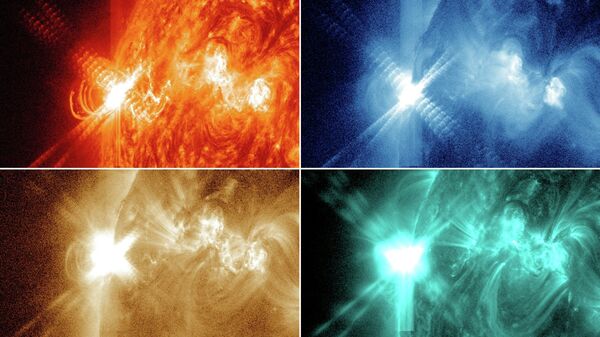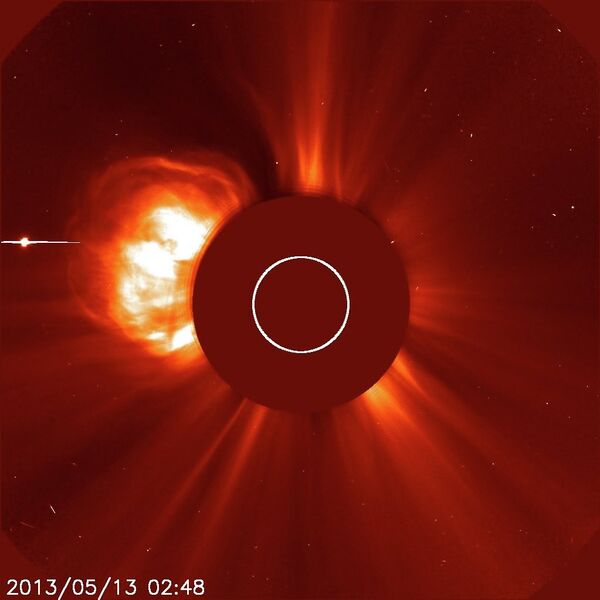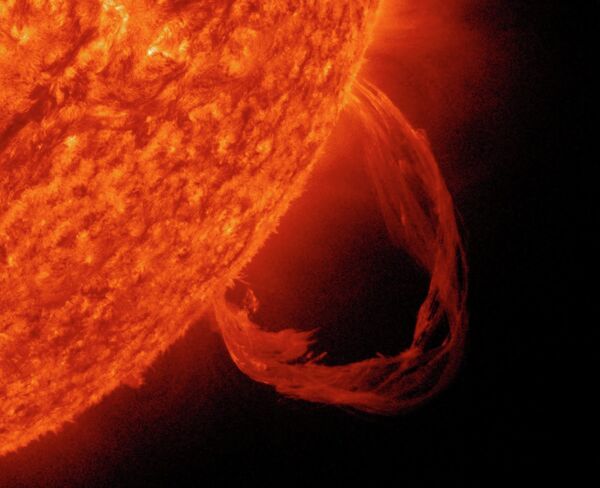WASHINGTON, May 16 (RIA Novosti) - The sun has put on a spectacular light show in recent days, firing off solar flares and coronal mass ejections that have sent particles from the sun hurtling into space at speeds of up to 1,400 miles per second (2,253 kilometers per second).

Solar flares are powerful bursts that send light and radiation into space, while coronal mass ejections (CME) send billions of tons of solar material, including electromagnetic radiation and plasma, shooting into space.
Activity on the sun is ramping up toward what is known as solar maximum, which occurs roughly every 11 years. The phenomenon, and indeed solar flares themselves, pose no danger to Earth, NASA says, allaying worries that the US space agency says are harbored by some people “that a gigantic ‘killer solar flare’ could hurl enough energy to destroy Earth.”
“This is not actually possible,” NASA says.
But even if they don’t destroy the planet, solar flares and coronal mass ejections can impact life on Earth.

Flares from the sun can alter the upper atmosphere and cause disruption to signal transmissions from GPS satellites to Earth, and particles and electromagnetic fluctuations from CMEs can cause electrical fluctuations on Earth that could blow out transformers in power grids, NASA says.
Particles from a CME can also collide with satellites and disrupt their systems.
All four solar flares that have occurred in recent days were associated with CMEs, but none was directed toward Earth. Two satellites that could be in the path of the solar particles spewed into space by the CMEs are being carefully watched by NASA, which is poised to leap into action to protect instruments on board the spacecraft should a collision with sun debris look likely.


